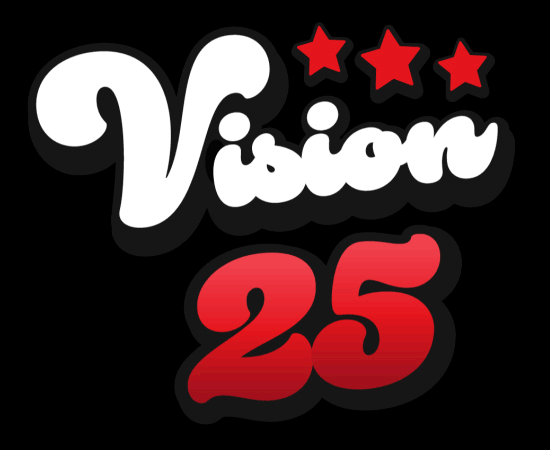SaaS, IaaS, XaaS: The Commoditization of Tech as a Service
SaaS, or Software as a Service, is the most well-known of the transition from traditional tech offerings to service offerings. This move turned a single fixed cost into a recurring payment and raised the overall cost per client while reducing the perceived impact for the client. SaaS grew into PaaS and IaaS and then finally into the general concept of XaaS, Anything as a Service. The floodgates were open for commoditizing various elements of the tech industry.
SaaS: Software as a Service
The reduction in cost for high speed internet, especially in business centers, has pushed software providers away from traditional per-seat licensing modeling towards SaaS. SaaS is attractive to both service providers and end users by offloading the cost of maintaining a traditional server stack or workstations to a vendor, got end users constant updates without having to pay for upgrades, and allowed providers to control the stack and milk recurring payments out of the arrangement. The overall cost over the lifetime of a client goes up substantially, but the perceived cost to the user goes down.
SaaS made it so all the user has to worry about is using the software. It also takes away some degree of control over the environment. This loss of control led to the commoditization of even higher levels of abstraction which give various amounts of control back to the end user.
IaaS: Infrastructure as a Service
Infrastructure as a Service, or IaaS, gives the ultimate control back to the end user. IaaS takes the guesswork out of provisioning hardware and makes the entire virtualization process transparent. You pay for the resources you use, speed of the network or disk, and basically nothing else. You can spin up entire domains with advanced routing this way.
Vendors like US Signal, Microsoft, and Amazon all have these as offerings. These types of offerings completely offset initial costs for spinning up a cloud environment however you want. IaaS does require significant upkeep on the user side for anything running in the environment.
PaaS, the Middle Ground: Platform as a Service
PaaS, or Platform as a Service, is last since it’s the hardest to nail down of the three. It exists somewhere between SaaS and IaaS and is basically defined in practice by being an offering with more control than SaaS, but without the full maintenance or control of IaaS. You basically control the platform, but not the implementation.
PaaS offerings sit somewhere between SaaS and IaaS, but usually drift closer to one or the other. A lot of SaaS providers will have a PaaS offering as well for added extensibility. IaaS vendors may have a PaaS offering which is a simplified version of their primary infrastructure.
Basically, PaaS means you support most of the application, but shouldn’t have to worry about the operating system or backend. A lot of PaaS providers will provide various additions and other things to make a lot of that not a worry though. It is a wildcard term for everything in between SaaS and IaaS in practice, so your expected responsibilities may vary. This is something to clear before signing a contract.
XaaS: Anything as a Service
SaaS, PaaS, and IaaS laid the groundwork for all sorts of services from small scale to large. Any part of maintaining a traditional business from a technical side has become fair game with XaaS, which is Anything as a Service. XaaS is the embodiment of commoditization of anything in the technical industry. Everything from network setups as NaaS (Network as a Service) to backup and disaster recovery as DRaaS (Disaster Recovery as a Service) or BDR (Backup and Disaster Recovery) exist now.
Integrating XaaS Into Your Business
We covered the basics of what each of SaaS, PaaS, IaaS, and XaaS are. These are some great terms, but what do they actually mean for a business? For an MSP, these are an upsell. You offload the maintenance of an onsite product to the cloud and bill for it. For your clients, you reduce risk and upfront costs by offloading a painful setup to a cloud environment with easier access and lower yearly costs compared to all of the other costs added together.
Like the move from block time to truly managed services, once everything is set up, you basically print money to be on call if something unexpected breaks. Be a good janitor for tech; your clients should never know you’re there, but they should know what would happen if you were gone. Your work should be a quiet black box they rarely see unless something unexpected pops up or a user has issues with something they’re doing. What is the client going to want to see, a report on what you’ve done that has prevented issues, or more stuff broken being fixed? The hardest part of servicing a client in a managed scenario should be in the beginning.
For businesses, XaaS offers a higher Total Operating Cost, but it normalizes unexpected costs almost entirely. Most services end up cheaper than maintaining the amortized cost of a server, the power and internet required to make it work, and the cost of the software license(s). The power of scale cuts the costs and makes the service more powerful. Not every option is right though depending on business requirements.
Finding What Is Right For Your Clients and Yourself
With all the options, it can be hard to shop. Where do you draw the line between SaaS and PaaS, or PaaS and IaaS? The lines blur badly with many options. It doesn’t help that each vendor has their own arbitrary distinction between service levels. PaaS may be IaaS for some features, and little better than SaaS for others.
Weigh the client’s resilience to change, their budget, and their want for flexibility. The more SaaS you get, the fewer options you have for customization. The more towards IaaS you get, the more resources are required to integrate the environment and make everything work. Sometimes flexibility comes at the cost of consistency, and other times flexibility is what makes consistency possible.
You need to ask yourself and your client why you’re moving to the cloud in the first place. Is it to cut costs or is it to offset responsibility? Is it for remote access without opening up their network or is it for easy updates? There are many reasons to move, all of them equally valid to a business. You have to understand the why to plan the how.
Commoditizing Technology as a Service
Most techs feel a bit dirty being a middle-man for a cloud offering. After all, you’re not really doing the lifting for the service and you’re getting money for it. While this holds true if you aren’t adding value to the process, what is your expertise, research, and ability to make sure everything works worth?
The old story about a plumber goes: a client calls a plumber and the plumber fixes his issues within a minute and bills the client $1,000. The owner throws a fit and demands an itemized bill to justify the bill since all he did is turn a spigot. The plumber gives him a bill which has two items on it, “turning the spigot, $1, knowing which spigot to turn, $999”.
Filtering the results for the client, helping them get started, and making sure everything integrates and continues to integrate smoothly is worth a lot to a nontechnical client. Don’t shortchange yourself if you can make their experience worth the bill markup.
With the business move to XaaS, your consolidation of options into a package provides value to the client and presents an opportunity to reduce fail points and improve reliability. The cloud isn’t infallible, but you take hardware maintenance, software maintenance, etc. out of the equation for you and your clients. It can cost more, but you reduce the work involved in making everything work together for both you and especially your client.
Avoiding the Security Pitfalls of the Cloud
Cloud offerings and XaaS have made it trivial to offload almost any given part of a business from the backend to the workstations. There are serverless environments and even cloud workspaces which are agnostic to what technology your end users are using. These can all present security issues when not thoroughly vetted and integrated properly.
It’s easy to fall for the trap of setting up a flat network to make everything work. Flat network topologies are insecure since everything can talk to everything else (among other reasons). The use of basic routing to divide the network up helps slow down many attacks. There is a maintenance cost and a technical cost to implement this however. This can be another upsale though. Either bake it into the pricing as a feature of your service or add it on.
Application
Knowing the difference between all of the different types of cloud services can help you better understand which is right for you and your business. Each offers its own range of features and has its own set of limitations. Sometimes the limitations are features for certain people. You have to know the use case to fully assess which option is truly best.
SaaS was the catalyst, but technical services are commoditized and the options can leave you dazed. Knowing what works with what and how to implement various offerings as a holistic ecosystem can be a major value add to clients. Security is extremely important as well and cannot be forgotten for the sake of convenience.

by Sage Driskell


